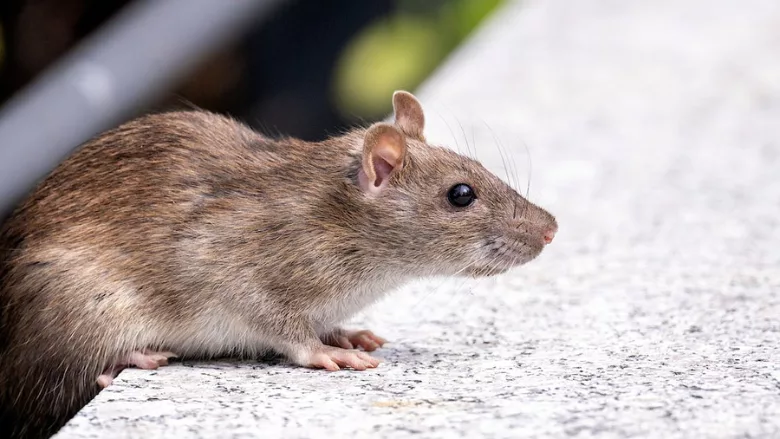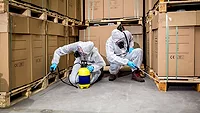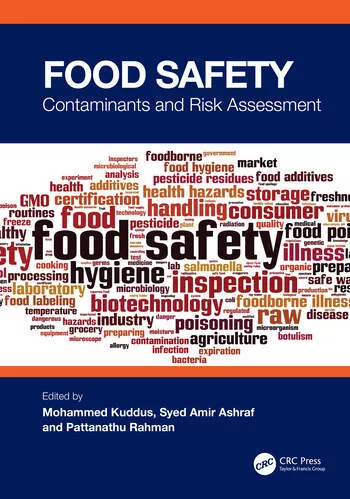Food Processing Facilities at Risk for Rodent Infestations

Credit: Denitsa Kireva(denitsa-kireva-2915302) via Pexels
The fall and winter seasons bring new challenges for food processing facilities and the teams that work to maintain them. One of the most notable challenges they face is increased pressure from rodents that seek out food and shelter within these facilities when outside temperatures fall. A rodent infestation can be extremely detrimental to a food processing facility, as it can lead to a facility being shut down if the problem is not addressed promptly and properly.
Rodent infestations are extremely dangerous to not only the health and safety of employees who work in the facilities, but these pests can also transmit serious diseases like Salmonella, which can contaminate food manufactured in the facility. In fact, rodents are known to contaminate or consume about 20 percent of world's food supply.
To keep their facilities safe, food processing facility managers need to regularly inspect the building and machinery for signs of an infestation. The top six signs of a rodent infestation to look out for include:
- Droppings: Finding mice or rat droppings around the facility is one of the most common signs of a rodent infestation. These pellets are often left behind in places where food is stored, such as storage areas, as well as under sinks, inside chewed cardboard boxes, along baseboards, and on top of wall beams.
- Gnaw marks: Rodents can cause serious property damage by chewing through almost any type of material—including plastic and lead pipes—to obtain food or water. House mice and Norway rats are also known to gnaw on wires behind walls, sometimes causing fires.
- Nests: Rodents prefer to nest in dark, secluded areas where there is little chance of disturbance. House mice, specifically, like to build their nests from shredded paper products, cotton, packing materials, wall insulation, and fabrics. If facility managers find these materials scattered around guest rooms or common areas, it might be a sign that rodents are nearby.
- Tracks or rub marks: Rats tend to leave dark grease or dirt marks along walls and floorboards as they follow a trail throughout the building between their nest and food sources. Facility managers should keep an eye out for these rub marks, which are caused by the rat's oily fur.
- Strange noises: Getting complaints that employees are hearing strange noises in the walls? Chances are these sounds can be attributed to a family of rodents scurrying about the facility, between the walls, and up in attics. Rodents are especially fond of storage spaces because they provide dark, secluded spots to build nests.
- An actual rodent: Mice can breed rapidly, so if a facility manager or a customer spot one mouse in the building, it is likely there are others playing hide and seek. In fact, a female house mouse can give birth to around 6–8 (or more) babies in ten litters per year, or around 70 young per year.
In addition to regularly keeping watch for signs of a rodent infestation, facility managers should implement prevention tips to avoid unwanted rodent run-ins:
- Trim back trees and foliage close to the foundation
- Seal any cracks or holes on the outside of the building
- Repair any broken vent covers, loose siding, or shingles
- Keep storage areas clean and organized to eliminate potential nesting grounds
- Properly ventilate storage areas and machinery to prevent moisture buildup that can attract pests
- Keep food products sealed and stored properly in airtight containers
- Clean high-volume areas often, including employee breakrooms, bathrooms, and lobby areas where crumbs and trash accumulate daily
- Dispose of garbage regularly and store in sealed receptacles that are placed at a distance from building entrances
- Work with a licensed pest control professional to perform regular inspections and recommend treatment if an infestation is found.
The most important step listed above is maintaining a regular inspection and treatment schedule with your licensed pest control partner. A professional can implement an integrated pest management (IPM) plan—a holistic and customized approach to pest control that comprises inspection, identification, and treatment to help ensure that commercial facilities are clean, compliant, and pest-free. These inspections should not stop at the end of peak pest season or after a problem is addressed. Pests, especially rodents, are a year-round threat to the safety of food processing facilities.
Looking for quick answers on food safety topics?
Try Ask FSM, our new smart AI search tool.
Ask FSM →








